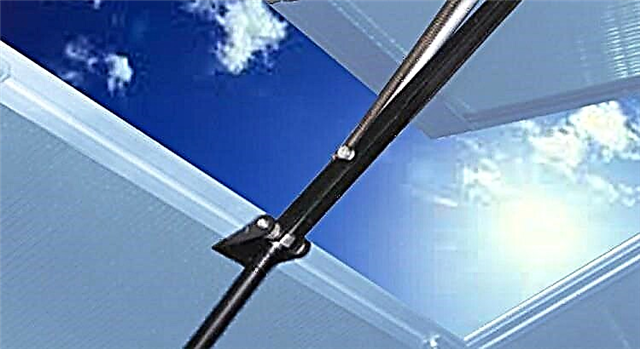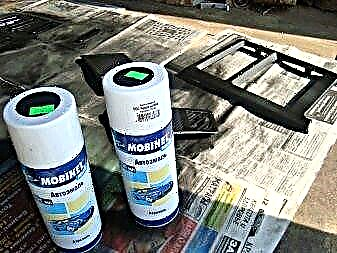Humidity and air temperature, comfort and benefit for the body depend on the furnace in the bath. The sauna stove must be equipped with a tank for heating water, a chimney and a stone-pocket for stones.

If you have a great desire to lay down the sauna stove with your own hands, and not hire specialists - be sure to read this article several times, you can even print it on a piece of paper and use it directly as a cheat sheet. In this case, you will significantly save and get invaluable experience, which in you in the future to add such designs is already for money. Exterior decoration plays an important role, because the bathhouse is a place of relaxation, both physical and moral, and the appearance of the furnace plays an important role in this! After the exterior decoration, the stove in your bath should become its “highlight”, an exclusive decoration that is just nice to look at, like a picture.
The sauna stove is either equipped with a furnace door to the next room, or directly into the steam room, where the firewood is laid. Naturally, it is better that the firewood is laid from the next room, if the size allows you - do just that.

Water tanks are mounted either behind the furnace body on supports (floor or wall mount), or they are mounted directly above the furnace firebox. At the same time, stationary floor mounting of the tank is safer than wall mounting.
How to calculate the volume of the steam and firebox furnace?
It is not enough to measure the dimensions of the room. It is also necessary to take into account the surface material. If the room has windows, a glass door, tile, brick, concrete surfaces, their area should be measured. For each square meter of the area of such surfaces, add one and a half cubic meters to the volume of the room, which will be taken into account when choosing the size of the furnace. The minimum power of the furnace for the bath is 8-10 kW.
Metal stove, is it suitable for a bath?

Metal stove air heater
This design of the furnace is the simplest. For work, you will need sheets of steel with a thickness of at least 5 mm, a welding machine and a grinder (or gas cutter), pipes for supplying and discharging water, refractory bricks, solution of furnace clay, stones, pipes for the chimney, faucet, stove doors with valves and hinges, metal profile for mounting the support of the stove.
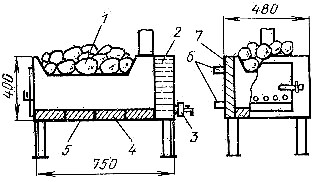
Sample stove heater
The design itself consists of a water tank with pipes connected to it and a faucet. The tank is heated from the rear wall of the furnace, the inner space of which, in turn, is zonally distributed on the furnace and open-type heater. Flue gases are utilized through a chimney exiting the firebox through a heater and walls of the bathhouse.
First of all, it is necessary to cut out the bottom and side walls of the future stove from sheets of steel and connect them by welding. We weld corners inside the furnace - they will support a sheet of metal on which we will lay the stones.
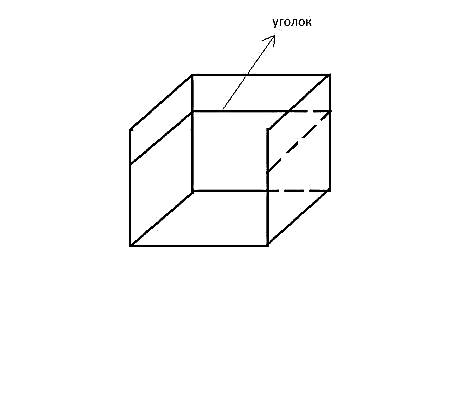
We make a frame for the furnace
On the front wall we cut a rectangular hole for the door, and from the cut rectangle we make the door. Along the perimeter, you can scald it with strips of steel for a greater fit. At the bottom of the door or the front wall of the firebox we drill several holes for air to enter the furnace. By welding, we fasten the door hinges and the hinge under the valve.
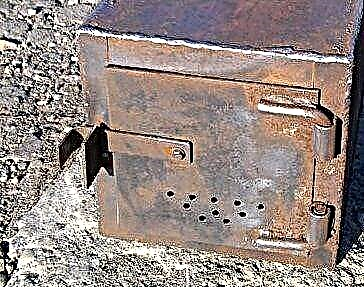
We enclose the interior of the furnace with fireclay brick
To make a chimney, we will prepare a pipe and make a hole in the sheet of metal on which the heater will be. We weld a branch pipe to a steel sheet.

Metal stove for a bath
We proceed to the installation of the water tank.It consists of three walls and a bottom, hermetically welded together and the rear wall of the furnace. We weld the inlet and outlet pipes for water to one of the side walls of the tank. Then we weld the tap at the bottom of the tank. We install the entire structure on a frame made of steel profiles or on a brick base with a height of 20-30 cm. We cover the metal parts of the furnace with refractory paint. We spread stones (talchochlorite, porphyrite, basalts, etc.) up to the size of 5 to 12 cm. We mount the chimney and chimney, pour water into the tank, cover it with a lid and ignite the finished furnace, checking the structure for draft and no smoke in room.
To upgrade a potbelly stove for a bath, you can equip it with an ash pan with a grate and a drawer for collecting ash. This will greatly simplify the cleaning of the furnace, and the blower door will help to better regulate the draft, and accordingly the temperature and rate of combustion of the fuel. For the same purpose (regulation of the heating temperature of the furnace), as well as to reduce heat loss through the chimney, it is equipped with a valve. It can be a gate type or any other.

Chimney valve

Gate valve - view 2
Oven for a bath from a pipe or an old cylinder
The difference between this design and the previous one is that the water tank is located directly above the firebox. For work you will need: a pipe for the furnace and tank (wall thickness 1 cm, diameter 50 cm, height 150 cm), a pipe for a heater (the wall thickness is the same, and the diameter is 35 cm), a mortise tap, metal fittings, hinges for doors, steel sheets with a thickness similar to pipes, tools for welding, metal cutting.

The furnace for a bath from a pipe
- We divide the pipe of larger diameter in two using a grinder. From one part (length 60 cm) we will mount a water tank, from the second (90 cm) - construct a heating device for the bath.
- On a sheet of steel we make a marking to cut a circle equal in diameter to the pipe - the furnace body. For this it is convenient to use a spray can or marker. This circle will serve as the bottom of the structure. Hermetically weld it to the pipe.
- Immediately make the legs of the structure. To do this, we strengthen the bottom of the bath furnace with a metal frame made of profiles. The height of the frame is 10-15 cm.
- After the furnace is firmly on its feet, draw a 25x7 cm rectangle on the body. This piece of metal will be a blower door. We cut it out with a grinder, equip it with loops, a bracket-handle and a heck.
- We make the grate. Its task: to pass air from the blower into the combustion zone, to hold the fuel and not to prevent the ingress of ash and ash into the lower chamber of the furnace. Such a lattice can be made from pieces of reinforcement or a sheet of metal with holes cut out in it. The grate should be fixed by welding in the inner part of the pipe at a height of 12-15 cm from the bottom.


Firebox door for stove

Door for heater


Tank cap
Thus, from the simplest materials, you can quickly and cheaply build a sauna stove with your own hands, while it will not functionally differ from the purchased analogue! Performing the work efficiently and slowly, you will get a result that will delight you and your guests for many years!
Ordinary laying of the oven for a bath with your own hands - photo report
Everything is very simple, just look at the photographs and do exactly the same, naturally you need to use the right materials and mixtures!

Brick stove for the bath is ready
Zero row of the base of the furnace: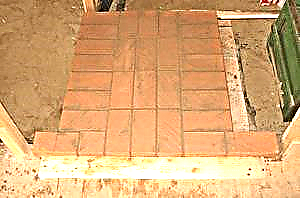 The second row of the base of the furnace:
The second row of the base of the furnace: Second row and blower chamber
Second row and blower chamber  Fourth row - cover the blower
Fourth row - cover the blower Put the grate
Put the grate The second row of fireclay bricks
The second row of fireclay bricks We leave a gap between chamotte and facing bricks
We leave a gap between chamotte and facing bricks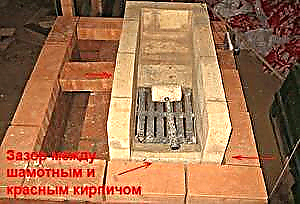 The third and fourth row of fireclay bricks
The third and fourth row of fireclay bricks We cover chamotte brick with ordinary
We cover chamotte brick with ordinary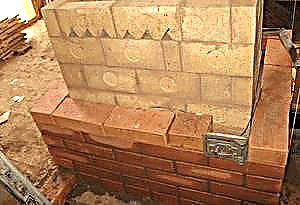 We put the fifth row of fireclay bricks
We put the fifth row of fireclay bricks Making fireclay grate
Making fireclay grate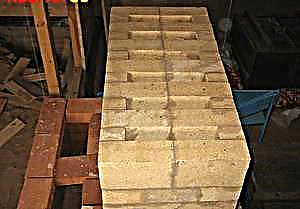 Making a holiday channel
Making a holiday channel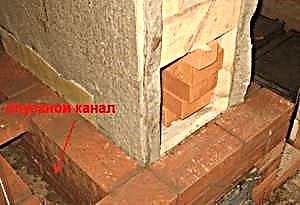 We put a furnace door
We put a furnace door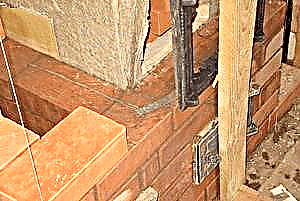 Print case
Print case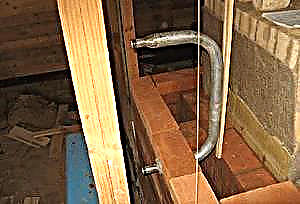 We fix the upper part of the door
We fix the upper part of the door Ready fire door
Ready fire door The appearance of the furnace at this stage
The appearance of the furnace at this stage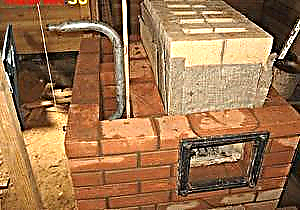 We make a lattice on which stones will have to lie
We make a lattice on which stones will have to lie The second row of a pocket for stones
The second row of a pocket for stones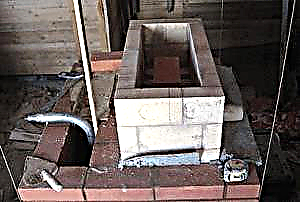 Display the upper level of the register
Display the upper level of the register What should the oven look like if you do everything right
What should the oven look like if you do everything right Necessary places for laying fireclay bricks
Necessary places for laying fireclay bricks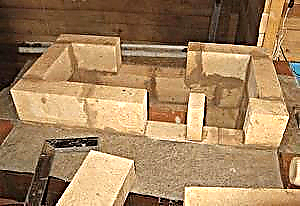 Extreme row of fireclay bricks
Extreme row of fireclay bricks Making holes in fireclay brick
Making holes in fireclay brick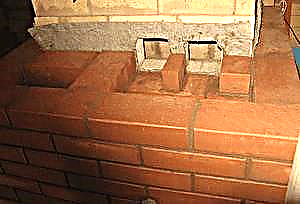 Preparing the valve for installation (fitting)
Preparing the valve for installation (fitting) Valve setting
Valve setting Valve cover
Valve cover We block the opening above the core
We block the opening above the core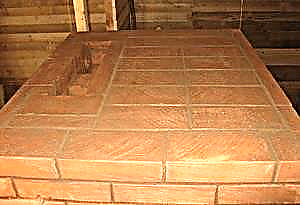 Narrow the chimney
Narrow the chimney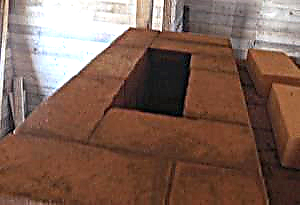 Chimney masonry
Chimney masonry Installation of a second valve
Installation of a second valve Fitting the top of the chimney to the ceiling
Fitting the top of the chimney to the ceiling If you did everything right, your bath stove should look something like this
If you did everything right, your bath stove should look something like this
Congratulations, it turns out that you completely coped with the task yourself!
Do you like the article?
Save so as not to lose!
How to make a stove for a bath with your own hands details from the master
The design of the stove is primitive, but has a number of significant conditions. The difference between an ordinary heating stove and a bath is that in the second there are additional elements, this is a heater and a water tank.

Many masters opt for making stoves in the bathhouse with their own hands, without buying in a store. The construction process is not simple, and requires enough time.

First you need to familiarize yourself with the main components of bath stoves, and this:
- material,
- energy used
- the location of the furnace
- heater heating system.

Features
A bathhouse and a sauna are far from the same thing, and therefore their stoves will be completely different. If it is necessary to create a high temperature in the sauna, while the heat must be hard and dry, then in the bath it is the other way around. The temperature also remains high, but due to the high humidity, the heat is mild and the temperature is almost not felt. Such procedures are useful for both physical and mental state.
Most of the baths are made of wood, and the type of stove that will be built there also depends on this. For example, oak baths are designed to create high temperatures, and brick stoves are most often built there.
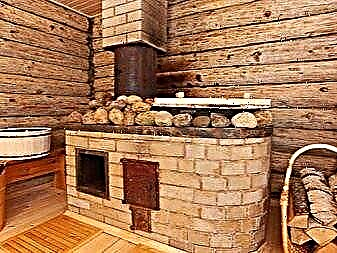

Linden constructions are extremely rare due to the fact that linden wood is a scarce product, and few people can afford such construction. Stoves here should not have strong power. The heat should not be strong, as linden baths belong to the category of lungs. Of course, the simplest solution is to buy a finished stove designed for a specific area of the bath. However, many refuse this decision.
Firstly, I do not want to overpay. Indeed, a quality hand-built stove costs two to three times cheaper than the same option from a renowned manufacturer. Secondly, a do-it-yourself stove allows the master to express himself. Thirdly, such a design can be made of any size and configuration so that it fits perfectly into your bathhouse. Custom-made stoves are very expensive, so it’s much easier to make the stove yourself.
Pros and cons of homemade designs
Independent manufacture of a furnace design has both its advantages and disadvantages. It is necessary to take into account both those and others in order to soberly assess their strengths and understand whether it is worth undertaking independent production or better yet not to save and order a ready-made solution.
So, the following provisions belong to advantages:
- Attractive appearance, which can be changed at will. Those who have experience in welding, as well as in everything related to the independent manufacture of things, can make a truly unique design that is not inferior in beauty to factory analogues.
- Cost-effectiveness. Home-made baths, arranged in the right way, are not inferior to factory ones in terms of saving fuel or electricity, if this option is chosen.
- High performance. A properly designed and built sauna stove has a high efficiency, so that no heat disappears in vain - everything is transferred to the steam room.


- Easy to maintain. Homemade stoves are easier to maintain, because the person making them knows where what is located, which places need to be cleaned more thoroughly, and which can only be slightly replaced.
- Durability. Like factory ovens, do-it-yourself stoves serve for more than one year, and if it comes to brick ovens, then it can last several decades.
- Space saving. Due to the variability of the parameters, it becomes possible to rationally fit the furnace design into the bath, without leaving too large gaps or without taking up unreasonably much space.


As for the shortcomings, there are not so many, but still they are:
- If a home-made stove is made of stone, then it may have too much weight. This will require additional strengthening of the foundation, which will entail additional costs.
- There is a need to protect the environment, since the amateur stove does not always have the necessary knowledge on how to reduce the temperature outside the furnace.
- It is necessary to carry out all the work with a high degree of professionalism, since an improperly made stove will not properly heat the steam room and in general will bring more problems than joys.

The difference between the furnace and the boiler
Many mistakenly believe that the stove and boiler are one and the same. Indeed, making a boiler is somewhat easier than a stove, but this does not eliminate the disadvantage that the boiler will never create the necessary temperature in the bath. The main purpose of the furnace is heat transfer. It dissipates heat around or redirects it to a specific place, but does not concentrate within itself.
With the boiler, however, everything is exactly the opposite. It pumps heat inside, and then transfers it through pipes. However, the lion's share of the heat is lost during the passage through the pipes, which causes the temperature to drop dramatically, so the boiler is not able to properly heat the bath.
Thus, the choice in favor of a furnace rather than a boiler is obvious, although it turns out to be many times more difficult to manufacture. It is important that you are not deceived by meeting in numerous instructions the assurances that the boiler and stove are one and the same.
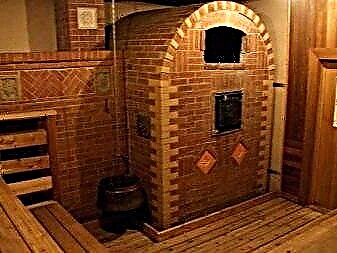

Today, home-made stoves are divided according to many parameters. Among them, not only materials, but also the location of the furnace, the presence or absence of fuel, the method of heating the heater. In order to properly assess the advantages and disadvantages of each of the available options, it is necessary to study all of them.
The important thing is that not all of these types are available for execution by a novice master. Most require a certain amount of experience and knowledge on how exactly such constructions should be made, on what to focus attention. Knowing what kind of stove you want to see in your bath will help you avoid having people spend time and energy adding options that will not be used in the future. For example, a steam generator or tank is not always necessary. The same goes for dimmer., with which you can set the temperature.
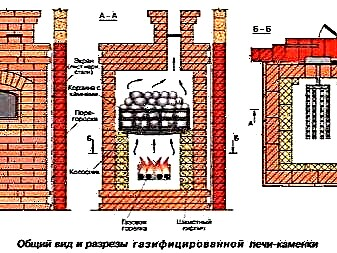

The latter option is available only to either professional stoves or people who are well versed in the nuances of such technological devices and who decided to build an electric stove.
Closed and open
The division of bath stoves into closed and open is a fundamental factor on which the type of heat they supply is fundamentally dependent. So, in closed furnaces, stones are covered with a lid. This is done so that the stones do not cool longer, giving off heat only as needed. No matter what the temperature, in the baths with a closed oven, the steam will be moist, soft, light.
In Russian baths, you can find similar heaters much more often.

As for open furnaces, they are more characteristic of a sauna than a bath. They give a hard heat, humidity is almost at zero level. With all this, the stones warm up almost instantly to high temperatures.
It’s easier to build such a furnace, since you don’t have to work on making a lid, but for a bathhouse, this option is not the best because of dry hot steam. In the bath, wet steam is welcome.
By material
The separation by material is the most obvious of all. There are not many options. Today, only metals and bricks are available for self-production.


Brick
The dream of many bathhouse owners is a brick stove. This is due not only to its traditional and solid look, but also to its durability, ability to retain heat for a long time and other positive features. However, in order to lay out such a stove, you have to work hard. Masonry takes a lot of time, in addition, it requires some experience. Also it will be necessary to purchase special materials: an ordinary brick will not work.
An important disadvantage of brick kiln structures is their weight. Small an oven designed to heat an average bath can weigh up to 300 kilograms, so the foundation under such an oven will need to be strengthened. However, this drawback is atone for the fact that such a stove is suitable for heating and a two-story bath, and not just to create a sufficient temperature in the steam room. In addition, aesthetically such a stove looks most attractive precisely because of its traditional appearance.
Many bath owners do not imagine their steam room without such an impressive design.
Metal
Metal furnaces are a more common option due to the fact that it is much easier to build such a structure yourself. All that is needed is sheet metal, tools for cutting and fastening it, and welding skills. Thanks to such a simple set of metal options and gained such frenzied popularity among amateur stove-makers.
However, the furnace can not be made of any metal. For example, aluminum, which is so easy to work with, is categorically not suitable for these purposes. In a cooled state, it bends easily, and even if it is heated, it will warp and bend very much. As a result, the stove will lose shape after the first heating.
Copper is not suitable for these purposes.. Copper furnaces are excellent in operation, however, this non-ferrous metal itself is quite expensive, as a result of which it turns out to be cheaper to buy a finished unit than to mount it manually.
Steel
It is easiest to make steel stoves due to the fact that steel is a malleable material, but not too much. Steel sheets are easy to process, but hard to bend with your hands, so they are more preferable for the construction of furnaces. But practice shows that steel furnaces have many shortcomings.
So, steel is heated to the point where the heat becomes uncomfortable and hard, which makes it unpleasant to take such a bath. It is impossible to somehow eliminate this drawback, since this is the cost of using a steel case.
Among other things, the steel furnace emits harmful infrared radiation, which generally negates the whole beneficial effect of the bath.

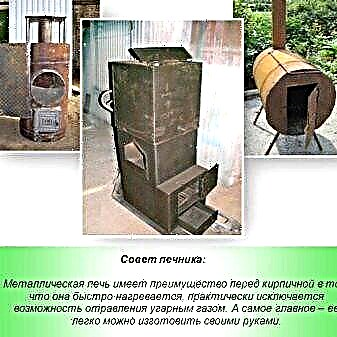
Steel stoves cool quickly, although they quickly heat up. Constant recharge will be required to keep the temperature at least approximately at the same level.
You will also have to keep track of what kind of firewood or other sources of combustion are used to maintain heat. If you use a heat source that has a too high combustion temperature, then the furnace may deform and cease to look attractive.

Cast iron
Cast iron stoves are extremely popular because cast iron is most suitable for the manufacture of furnaces among all metals. This is due to some specific features inherent in cast iron.
So, the cast-iron stove heats up quickly enough. Not as fast as steel, of course, but faster than brick. At the same time, she also warms up the steam room quickly. Compared to the brick kiln, cast iron “works” twice as fast.


Cast iron stoves keep the temperature for a long time, generating heat that is comfortable for a person. The heat is mild, the steam is damp. At the same time, there is no adverse infrared radiation, which can negatively affect health. The service life of a cast iron stove can be compared to a brick.
Cast iron is not afraid of high temperatures, so in theory in a bath it is possible to create any temperature. Cast iron constructions do not deform even as a result of impacts, not to mention the effects of heat. In addition, cast-iron units do not rust, which is an additional plus.


By energy
As for how you can drown the bath, there are many options. Among them are both traditional and modern. It should be noted in advance that the manufacture of electric furnaces or combined ones requires special skill. In the first case, you may need knowledge of engineering, in the second - the ability to combine several techniques at once in one product.
As a rule, for home bath stoves, fuel options are selected that do not require a lot of money in the future. Using energy-saving technologies or recycling of raw materials. This is especially true for wood stoves.
Some people heat the bath with wood-shaving plates remaining after the repair, however, this is categorically not recommended, since it’s still better for your health to choose real wood (oak, birch).
Electric
Electric bath stoves appeared not so long ago. Today, factory analogues are widespread. Few people dare to make such a design on their own, fearing to make a mistake and spoil expensive raw materials. but far more often than electric furnaces, one can find electric fireplaces. It makes no sense to make just an electric furnace, since with moderate electricity consumption, it will warm the steam room for too long, and for quick heating, you will have to use too much electricity, which will negatively affect utility bills.
It is better to use the power of electric recharge only to maintain the existing temperature in the room. Then a lot of electricity will not be wasted, and you won’t have to fight over a full-fledged electric furnace, and maintaining the temperature at the required level will become much easier.


Wood burning
The preferred option, which most prefer, are wood-burning stoves. They are recognized as the best option for a bath, since fumes from real wooden firewood are good for health. It’s easiest to build a wood stove: there are many schemes and methods by which this can be done.
Best served by stone wood stovesHowever, cast iron counterparts are also quite acceptable. So, a brick oven with wood does not cool for a long time, and if you use firewood for long periods of time, then you can maintain the desired temperature at least all night.
However, problems may arise in order to fold such an option correctly. To do this, you need the help of a professional stove-maker, and there are very few of them on the market. A wood stove can be made of steel or cast iron. If you have some experience, choose cast iron.. It’s more difficult to work with, but the oven will turn out more reliable.
Gas
To date, gas stoves are almost as popular as wood stoves.Often make combined options in which the stove can be fueled by both wood and gas. However, such popularity of gas baths is explained not only by their ability to quickly and efficiently heat the air in the steam room.
Gas is one of the cheapest types of fuel, so not much money will be needed to buy it. Among other things the gas stove does not have to be cleaned and cleaned as often as a wood stovebecause the gas cannot clog the chimney or clog the fuel chamber.
Independent production of a gas stove is a rather complicated procedure, since many requirements will have to be taken into account, but this will guarantee high safety of using the stove in the future.
If you are not confident in your abilities, it is better to refuse to make a bath stove for gas, otherwise the bath can simply turn into a gas chamber.
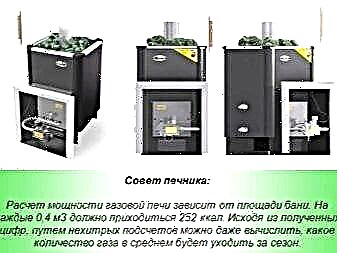

According to the location of the furnace
When the sauna stoves were only invented, the furnace was located inside the furnace and there was no thought that it could be located otherwise. However, over time, people realized that small improvements can completely change the stove design itself, as well as the quality of the air and heat in the steam room. So there were remote fire chambers. To date, there are only two options for the location of the furnace - built-in and remote.
Each of the options has its pluses and minuses, so it is impossible to unambiguously determine which of the options is better. Each of them is suitable in a particular case, often remaining the only possible one.


Built-in
Built-in firebox is used only in cases where it is necessary to save space. It happens that you have to abandon the presence of a dressing room when it comes to a very tiny bath. However, this is where all the advantages of this option end.
The built-in firebox has many times more disadvantages than pluses. So, the location of the furnace inside the steam room contributes to the fact that oxygen is burned out in the room, which is already a little there. The only way to rectify the situation is to set up a ventilation system.. Oxygen will indeed become more, but this will lead to the fact that the temperature will drop significantly and will have to heat the furnace more. As a result, oxygen will burn out again. It turns out a vicious circle.
Also, the prospect of tossing firewood if the firebox is inside the steam room does not seem tempting, since accidentally popping coal can lead to the fact that the whole bathhouse flares up like a match.

Remote
The portable firebox is much more functional, but enough space is required for it. In this case, the chamber itself, into which the firewood is thrown, is located in a room adjacent to the steam room. The advantages are obvious: there is no risk of burning from a lack of oxygen, firewood is thrown from another room, so the risk of a fire is also minimized. No matter what the temperature in the bath, the microclimate will still be comfortablesince precious oxygen will not burn out and the heat will not seem harsh.
A significant minus is only that the bath must consist of at least two rooms, that is, have a larger area. However, this minus can be called a minus only with a stretch, since few people make a bathhouse consisting only of a steam room.
Another important point: it is better to place a fire extinguisher near the firebox just in case.

According to the method of heating the heater
This paragraph implies the placement of stones relative to the heat source. Distinguish between periodic and continuous heating furnaces. In continuous heating furnaces, which are more common today, stones do not come in direct contact with the exhaust products of combustion. They are placed in a special container, which is located in the steam room itself. The stones of the middle fraction remain clean, you can pour a little water on themto make the steam more humid.So, the maximum temperature for heating stones reaches 400 degrees, the steam is dry and hard, more characteristic of the Finnish sauna.
The heater of periodic heating looks quite different. Here, smoke from burning fuel passes directly through the stones, later exiting through a chimney. This imposes certain restrictions: for example, Do not wash in the bath until all the fuel has burned out and all the carbon dioxide has escaped.otherwise you can get burned. Stones in this case are heated to extremely high temperatures - 1000 degrees. Steam forms as soon as you pour water over the stones. By the way stones for such heaters should be large and rounded.
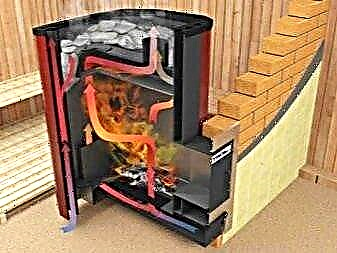

By tank availability
Often baths are equipped with a water tank on the side. So the heat from the side walls of the stove does not disappear in vain, but heats the water in the tank, which can be used later on your own. The side tank also serves as a heat exchanger, due to the presence of which an optimal microclimate is achieved in the dressing room and steam room.


Another purpose of the tank is to heat the rest of the building. It happens that the bath is located on the ground floor of the house. After the stove has been heated, it warms up the water well, which is later carried around the house through a system of pipes.
Such improvised heating radiators can be done with your own hands, if you additionally study how such a system works, on what it is based. To weld an ordinary tank on the side of the stove or at the chimney is not difficult.

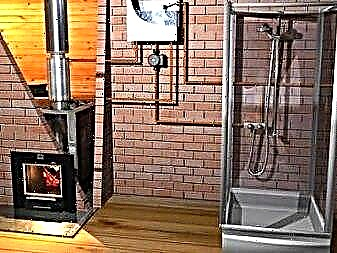
With steam generator
As for the device of the steam generator, this solution allows you to fill the room with heavy wet steam, as in a hammam, without resorting to a complete alteration of the stove. The most interesting solution is to install a mini-steam generator in addition to a home-made bath stove, which will save space, and at the same time cope with its task no worse.
In addition to the above, there are several varieties of bath stove designs that do not fall under any classification. One of them can serve mobile oven. It has a much smaller size and weight, due to which it can be relatively freely moved from room to room. Mobile stoves are usually equipped with a built-in firebox, since there would be more problems with the remote.


The upper burning bath, or feeding - a design in which burning begins from the upper tier of stacked firewood, gradually spreading to the lower rows. Since ancient times, such constructions have been used for Russian baths, since they allow avoiding serious heat losses at the very beginning of burning.
Fuel processing is gradual and smoldering occurs already at that period when the steam room is hot enough, and all that is required is to maintain the temperature.


What to look for when choosing?
Before you stop your final choice on any of the options, you need to evaluate it in several ways. Such careful preparation is required due to the fact that the construction of a furnace (especially a brick one) is a troublesome task and requires financial investments, so it is important not to make a mistake.
The assessment is based on the most obvious and common factors, and they affect both the choice of material and design.
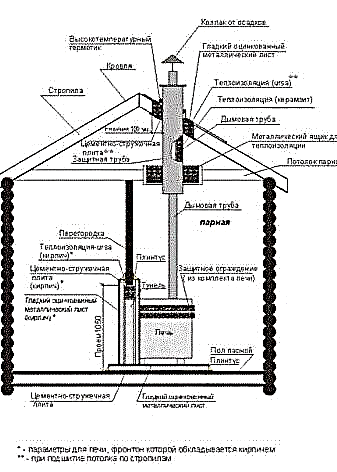
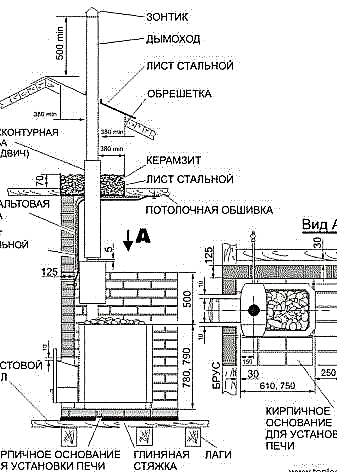
Heating rate
How quickly the stove heats up is crucial when it comes to a year-round bathhouse. If in summer there is practically no risk that the bath room will not warm up well enough, then in winter this probability is extremely high.
So, in the summer you can heat the bath in 3-4 hours, while in the winter you will need to spend 8-12 hours on it.
It is also important how well the stove keeps heat.For example, the steel structure heats up well, but also cools quickly, which negatively affects the time during which the bath can be washed. The debatable question is whether it is worth heating the bath for 3 hours in order to be able to steam in it for only an hour. To maintain the temperature will take too much fuel, which is irrational from a financial point of view.
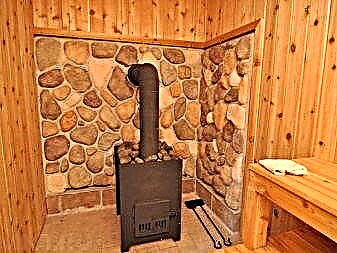

Layout
This implies the presence of a steam generator, a tank, as well as the location of the furnace relative to the furnace. All these nuances were discussed in detail in the classification section.


The method of heating the heater
Contact of stones with smoke from heat sources plays an important role, since it depends on how soon you can wash in the bath. This affects the temperature and humidity in the bath, as well as the microclimate. Some varieties are more suitable for saunas, others - for Russian baths, but recently the most popular are combined options, when you can vary the humidity of your own volition. For this, heaters of periodic heating with a miniature steam generator are most suitable.
However, if you need to receive steam only of a certain type (for example, if you are a fan of the Finnish sauna and only it), then it would be more logical to save and build a heater without additions, but only one that would be provided with the necessary parameters.

Fuel used
Decide in advance what you want to fuel your stove. The complexity and high cost of manufacturing a stove largely depend on this. So, the most simple version to execute is the wood construction, since here you do not have to resort to technical improvements.
The optimal solution would be to combine in one furnace the ability to be fed from several power sources. For example, when one of them ends, you can use the other. The most popular is the combination of gas and firewood.
In addition to the above, there are several factors that are not so extensive, but also significant. These include the temperature power of the furnace.

It does not make sense to make a furnace too powerful for a small bath, but too small a design will not cope with heating a large room. Be sure to correlate the quadrature of the bath with the thermal return of your product.
The temperature of the walls of the furnace unit is also not in last place in importance. Not so long ago, the so-called “cold” stoves appeared. They have to warm up much longer, but their temperature outside never exceeds 60 degrees, while inside it can be several hundred degrees higher.

Blueprints
Drawing up a drawing is an important and crucial step. It is practically impossible to draw up a competent drawing without proper education, and without a proper drawing it is impossible to build a good furnace. Fortunately, there is a simple solution - use a ready-made scheme. They are abundantly freely available, so you can choose the most suitable.
Another option is to order the production of a drawing according to your own measurements. This solution has several advantages:
- such a unit is ideally placed in the niche of the bathhouse that you took under it,
- there will be all the necessary additions (for example, a tank),
- the connection diagram of the parts is usually immediately indicated on the drawing, so you will avoid difficulties.

The cost of such a custom-made option is not so high, so you can quite afford it. The money spent on buying the scheme will allow you to save a lot of energy, time and nerves in the future.
Materials
As mentioned above, today there is only a small number of materials from which bath heating structures are made.
This is due to the specific requirements that are put forward to them:
- ability to withstand high temperatures
- not susceptible to corrosion, decay,
- incombustibility
- acceptable price,
- durability and others.
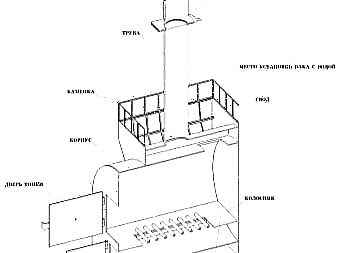

Because of this, the list was reduced to only two positions: brick and metal. Stone stoves were and remain the most preferred option for Russian baths, however, metal is much cheaper and easier to use. This led to the fact that metal structures are gradually replacing brick. For self-manufacturing, it is also better to prefer a metal unit, since it is easier to do it yourselfthan lay out a brick classic design.
Brick stoves are beautiful, with high heat dissipation. Due to the fact that it is difficult to make them yourself, many refuse to build them, but with enough experience, you can do this design yourself.
Simple stoves are as follows:
- A simple stove without frills looks worthy and interesting, despite the fact that a lot of effort and time was not spent on its construction. Such a masonry is even for a beginner.
- A more complex version laid out by a professional master. Such beauty requires professionalism, but the result is worth it. The result was a full-fledged Russian stove.


As you can see, a brick is aesthetically attractive, but working with it requires some skill. Simple metal aggregates are made by homegrown craftsmen throughout Russia, while furnaces are no worse than factory ones. There are products as simple as possible, and with forged elements.
Approximately this kind of metal constructions are made by hand. The most simple unit with a heater and everything you need will not take up much space. This stove has a built-in firebox, so it is designed for installation in the smallest bathhouse. A home-made stove design with forged elements and a tank for heating water will fit perfectly into any bathhouse.
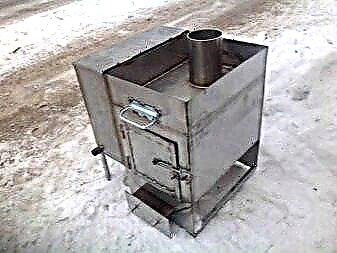

Making forged parts will require blacksmithing skills or they can be custom made. It is up to you to choose which material suits you best.
Tools
To make a metal furnace, you will need the following tools:
- welding machine for tight connection of parts,
- a grinder with a diamond blade for cutting metal sheets,
- drill for making small holes,
- construction level, assembly tape measure, protractor and marker for marking,
- disk for grinding metal.
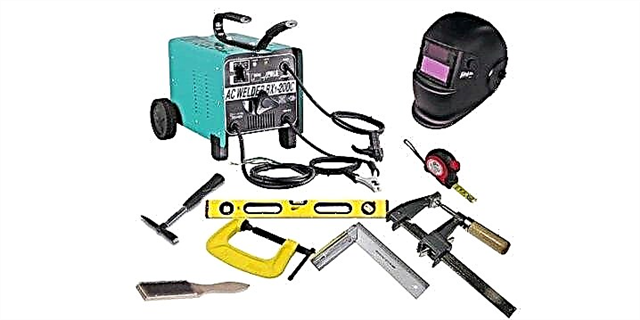
For a brick kiln, more diverse tools are used:
- various trowels and putty knives for applying a mortar that holds bricks together,
- a pickaxe to give the bricks the necessary shape and chipping off excess pieces,
- laser building level for horizontal assessment,
- plumb line for vertical evaluation,
- construction "triangle" with dimensions 40x40x57 cm,
- rule for removing excess mortar and leveling bricks,
- buckets and pallets in which mortars for bonding bricks will be bred.


Design
Homemade stoves can have a different finish, which determines their appearance. However, it all depends not only on this. First of all, the beauty and aesthetic appeal are determined by the accuracy with which all work has been carried out.
The most interesting may be the following presented homemade options:

As you can see, there are no metal products among them, since brick aggregates look much more advantageous in design.
Where to install?
The answer to this question is obvious: in the steam room. However, in reality, everything is not so simple. If the unit with the built-in firebox just needs to be installed in the steam room, then with the remote - only at the wall adjacent to the room into which the firebox will go out. The firebox may also have access to the street.. Then it’s important to evaluate in which place you want to see the exit, and install the stove there.
The decision about where the installation will be carried out must be taken at the stage of laying the foundation. This measure is related to the fact that the foundation in this place will need to be well strengthenedotherwise, the floor simply cannot support the weight of the furnace structure and fall apart. It will also be necessary to plan to lay the mounting hole for the furnace, if it has a remote firebox. Otherwise, installation will cause serious problems.

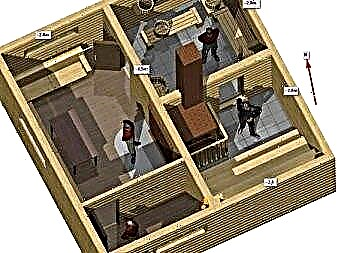
Preparatory work
At the preparation stage, it is necessary to prepare not only the materials from which the furnace will be directly built, but also the bathhouse itself. If you do not do all this quite qualitatively, then the probability of improper operation of the stove is high. For example, heat may not be supplied where it is needed, or problems may arise with smoke release, which can be hazardous to health.
The first step is to search for or order a drawing (possibly self-made). The drawing should contain all the necessary information about the furnace.
It is also recommended that you immediately indicate to what maximum temperature you can heat your chosen metal. Usually, these data can be clarified in the same place where you make a purchase.

Metal preparation
This procedure is carried out after all the details are cut in the right sizes. It is necessary to let go of those elements of the future unit that are heated the most. These include sidewalls, top and firebox door. They are in contact with burning fuel.
The release is as follows. First, the sheets are red-hot, after which they should not be cooled quickly. It is best to let the metal sheets cool slowly.. They do not need to be lowered into cold water. After carrying out these manipulations, you may notice that the parts warped, lost their original shape. To return them to a look close to the original, use a hammer, knocking parts to the desired shape. If the hammer does not help or the parts become larger, then simply saw off the protruding parts.
This preventive measure avoids that the stove will warp during the first use.

Calculations
All stove values should be given in the drawings. It is about what area of the foundation needs to be strengthened and how much should be protected from the area of the walls. Based on the size of the furnace, we can say that the foundation strengthening site should extend beyond the edges of the furnace by 30 cm. For example, making a square metal assembly with dimensions of 60x60 cm, you will need to strengthen the place 120x120 cm (30 + 60 + 30 cm on each side).
The wall should be insulated 50 cm above and further the oven. For example, with a stove height of 80 cm, you will need to make insulation 1.3 m high from the floor. It will also be necessary to lay the metal sheet in the place where the furnace will be installed. This is done so that in case of which the fallen coal does not cause a fire. The metal layer should protrude 1 m beyond the door plane.

Markup
Before starting work on cutting metal, all components will need to be marked out. For this, again, the data shown in the drawing are used.
Sometimes marking is done right on the go, when the unit is composed of rectangular and square elements, however, even in this case it’s better to draw borders using a marker. In the future, it will be easier for you to cut the necessary details, following the intended lines.

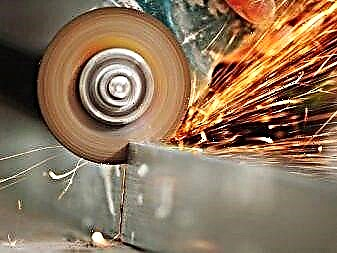
Room preparation
This refers to the laying of metal sheets on the floor and walls, the calculation of which was given in one of the previous paragraphs. It is best to choose stainless steel for these purposes.. Despite the fact that it sells under the weight of the furnace, there is a dignity that completely redeems this fact - you will not encounter spoilage of metal with rust, which can greatly worsen its appearance and condition.


Foundation strengthening
It would be more logical to place this stage at the beginning of the list, since strengthening should be carried out at the stage of laying the foundation. However, if this has not been done, you have a difficult stage to disassemble the floor.
There is an alternative way: choose an electric stove, which due to lack of fuel will not weigh as much as gas or wood options. However, this is also associated with some costs.
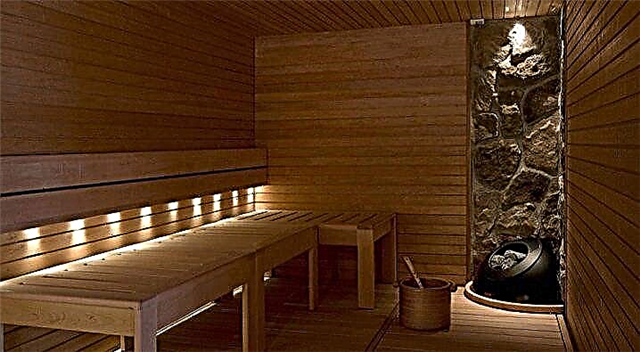
Manufacture
The device of a metal furnace does not cause such difficulties as a brick, so it is logical to start the description with a simpler option.
To make a simple stove out of a pipe, use the following step-by-step guide:
- The easiest way is to make a unit from a log. For this you need a piece of pipe at least 50 cm in diameter. The size of the segment depends on how high you want to see your stove.
- Cut a blower in the pipe with dimensions of 0.05x0.2 m.
- Cut a hole for the furnace with dimensions of 25x20 cm.
- Next, weld the fasteners for the rods that make up the heater. For this, fittings with a diameter of 1 cm are suitable.

- Fasten the wire mesh from the rods.
- Opposite the heater, cut another steam hole.
- Fill the heater with stones. It is forbidden to use granite or any stones containing mica for these purposes. Talcochlorite is excellent.
- Weld the diameter of the cap on top of the pipe.
- Cut a hole under the chimney in the lid. The diameter of the chimney pipe should be about 15 cm.
- Weld the chimney.


Installation of a brick furnace will require much more materials, strength and time. Depending on the chosen option, you will need a certain amount of brick. Make sure that the brick is fireproof.
Pay attention to the following diagram. It indicates the order of the bricks. Follow it to build the stove correctly. Also, a brick can be lined with a metal structure. This gives the effect that a brick stove is installed in your bath, not a metal one.
Thermal insulation
Thermal insulation of the stove itself is necessary if only because in the process of burning a lot of thermal energy is dissipated in the surrounding space. The owners of the baths are trying their best to level this deficiency in order to rationally use all available heat.
Thermal insulation can be carried out in several ways:
- By installing protective wall-mounted metal screens. They will reflect heat. Such a screen makes sense to place around the heater, located in the steam room. Then all the heat will not dissipate into nowhere, but be pumped into a double room.
- Brick shielding. In this case, the thickness of the brick should be equal to half the standard, that is, it is optimal to use the masonry of half the brick.
Protection for walls and floors, which is made of sheet metal and has been described above, also serves as a kind of measure of thermal insulation.


Safety precautions
When you are in the bathhouse, there are two real dangers: get burned or get burned. To prevent the occurrence of burns, they came up with a special material - basalt cardboard. It is laid around the stove so that the awkward movement does not lead to a severe burn, because in an atmosphere of hot air, touching the surface is the same as air, temperatures can cause a serious burn of the second degree.
To avoid the danger of fumes, it is advised not to make such a furnace, the blower of which goes directly to the steam room. It is best to bring it to an adjacent room or to the street.
Also it is necessary to check whether the ash is removed before "pressurizing", since the combustion products are able to emit carbon monoxide, which is odorless. Understanding that you are suffocating him is not easy.

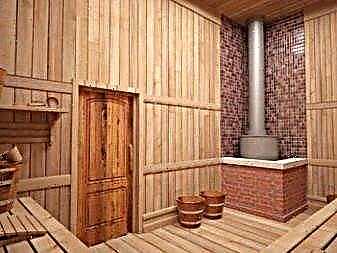
Tips & Tricks
Experts share some tricks that will make the manufacturing process of the furnace much easier:
- Do not neglect the drawing. Without it, there is a high probability of making a mistake and building an ugly and ineffective stove design.
- Be sure to do all the work to prepare the room, as this will reduce the risk of fire.
- Repair of the furnace must be done on time to avoid the need to soon replace the existing stove because of the impossibility of troubleshooting.
- If you plan to use the stove not only for the bath, but also for heating, consider a pipe system.
- If you are not sure that you can build a furnace of decent quality, give up this venture. A sober assessment of your abilities can save you energy, time and money and save your self-esteem.


Beautiful examples
- A self-made unit made of ferrous metal with a twisted heater looks interesting and unusual. Such a design can decorate any steam room, regardless of its size.
- If the stove does not look very attractive, this does not mean that it does not serve well. In this image, the option available in most baths is clearly visible. The owners did not spend much time finishing, concentrating on the functioning of the furnace.
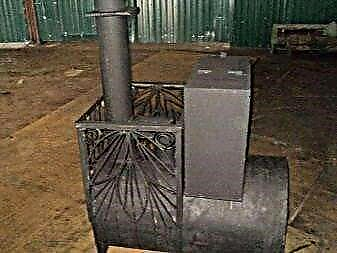

- A metal stove in a brick cladding looks traditional, but it is not so difficult to make it. Brick salary in this case acts as a heat-insulating shield, allowing the temperature to remain at its original level longer.
- If a person has sufficient time and patience, as well as skills in the difficult task of laying bricks, he can get such a beautiful design. Using polishing, the bricks were given the desired rounded shape.


See how to make a bath stove from a pipe in the next video.
Types of fuel and types of furnaces
The stove in the bath is divided into 2 main groups, these are: metal (cast iron) and brick options. Brick sauna stoves are heat-intensive, they warm longer, but also cool for a long time. An iron stove is a heating item of economy type, due to multitasking, simplicity and convenience of equipment. When choosing a stove or fireplace, you need to look not only at the design of the heat source, but also at the type of fuel. Different fuel during the combustion of the same mass will produce a different amount of heat. There are many variations of energy.

By aggregate stay and type of fuel, all fuel groups are divided into solid, liquid and gaseous fuels. Solid is a common fuel class, it includes: coal, peat, briquettes, firewood, pallets. They are used only in ordinary stoves since they quickly burn out. The liquid type of fuel is kerosene, fuel oil, diesel, boiler, coke-chemical liquid.

They have significant calorific value. The first type of gaseous fuel is natural gas, obtained from gas deposits, or associated gas during the production of naphtha. He has a good calorific value.

Positive and negative qualities of metal stoves for a bath
Steam can not be without a stove, because it is she who heats the room and maintain the desired temperature. In our time, you can find a wide range of diverse options. But it’s best to make the oven yourself.
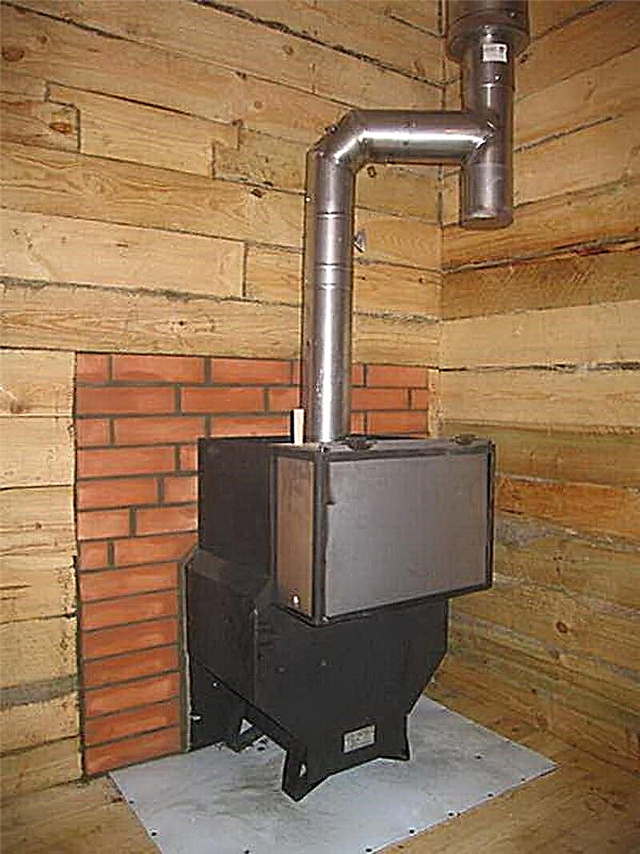
The improvements of the metal device include:
- the action takes place swiftly, and at the same time not very costly, this can be done autonomously with basic knowledge and experience,
- a significant part of the models are compact, so they are suitable for small saunas,
- rapid heating of the steam room to the required temperature, even in the winter season,
- the mechanism can last a long time, it all depends on the welding condition and the thickness of the metal,
- lean fuel
- easy to use, even a person who does not have the proper skills can handle it.

The iron furnace has negative qualities, these are:
- low heat capacity, it is not enough to heat the rest room,
- excessively rapid cooling, so you need to regularly heat,
- the walls heat up, and nearby objects can catch fire.

Determining which furnace is best for a bath is not easy, there are many design qualities.
The device of metal furnaces
Metal is a malleable material than ceramics, it can be melted and cast, drilled, cut, bent, forged. There are a considerable number of metal processing. Basically, when making a furnace with your own hands from metal, you need to focus the horizon on its quality. The metals used for the production of the heating mechanism are: ordinary steel, heat-resistant variations of steel, surrogates and cast iron.

The second step is to create a stove, and choose the type of its design. Dressing can be of various shapes, the main thing is to observe the connection technology. There are schemes for this, where the structural properties of all elements are detailed. It is allowed to be created with an open or covered heater. Closely take into account the dimensions of the bath itself. The elementary design should consist of a water tank and a firebox, and definitely have a tube, rod and grate.

Still must have strong heck. To divert combustion results, it is desirable that the furnace is equipped with a chimney. As well as a crane that will be mounted on a tank of water. Not all stoves look harmonious in the interior of the house, you can solve this problem by removing the portal for the sauna stove with your own hands.
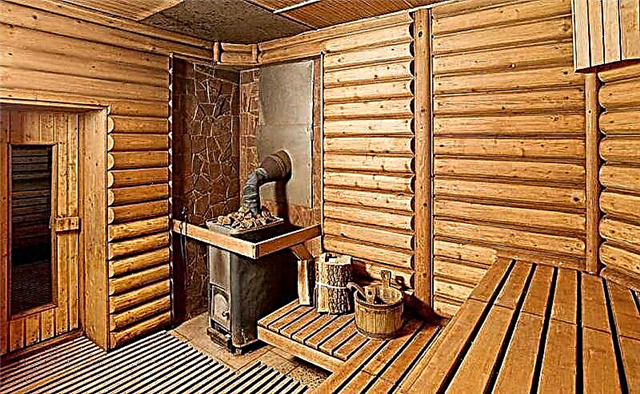
Differences between metal stoves for baths and saunas
Steam rooms in the sauna and bath have impressive differences, this is the temperature and dryness of the air. In the bath, the temperature varies from 50 to 70 degrees, as a result, soft steam is formed. In the sauna, the temperature is above 85 degrees Celsius, the steam comes out dry. To create certain conditions in the steam room, use different furnaces and all sorts of approaches for their installation.

To build a sauna, it is necessary to observe the maximum contact of the furnace shell with the air in order to provide rapid circulation of air flows along the walls.

It all comes down to ensuring that the air warms up faster. In the bath, the microclimate is organized in a different way, where a high temperature is reached and a lot of steam is formed. To achieve the effects, the stones are placed in a furnace, that is, in a closed heater. A small heater is predisposed above the firebox, which accompanies the heating of stones to 250 degrees Celsius.
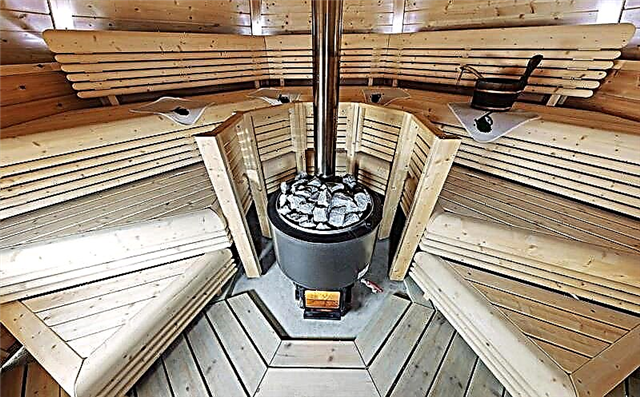
The next difference is that the metal stoves for saunas are convectional, and all baths are organized in such a way as to avoid thermal convection without a trace. Conventional convection is the movement of air inside a room.

DIY Russian-made stoves
The current Russian bath is a small house of timber or logs. Inside, as a rule, there is a division into 2 rooms, namely a dressing room and a steam room. An oven for a Russian bath is not just a heating mechanism, it is its most important accessory. The temperature, dryness and the heating level of the steam room depend on it. Many categories of stoves for a bath are presented.

But not everyone is suitable for a Russian bath. The fundamental difference will be the heating of air to a temperature of 65 degrees Celsius, with steam being created in the range from 60 to 80 percent. As a result of this, the so-called weak steam forms in the steam room.
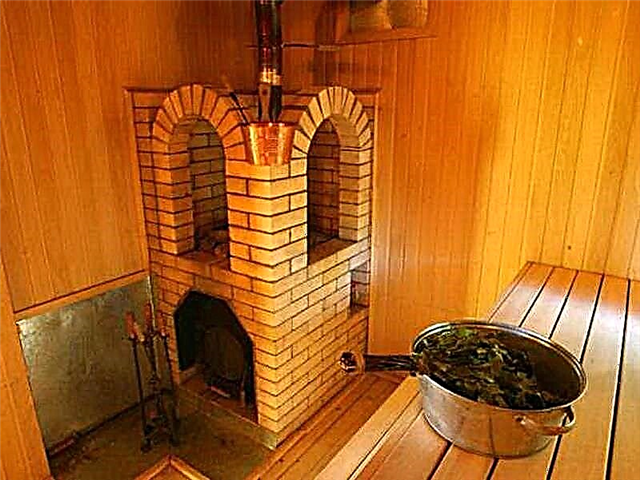
This is a pleasant, moderately or almost no burning velvety steam. In a true Russian bath, it is nice and easy to breathe, and the skin will not experience severe heat loads.
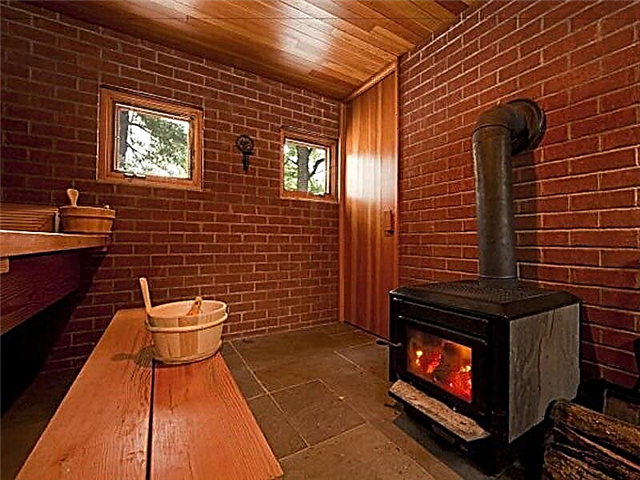
Often in a bath they put a brick or steel stove. All these materials warm up very well and transfer heat to the room quite well. There are no stamps for the construction of furnaces; only the general positions of architecture and construction are respected.

Short description and dimensions of the metal stove
An iron stove for a bath is able to efficiently heat small rooms. It is created by a covered, open and combined design. The mechanism has a tank for heating water and a heater built in the upper part of the furnace. The closed device consists of 3 compartments, this is a chamber with a blower, a heater and an opening for the output of steam, and a tank for heating water.

The open type installation has a metal grate on which stones are placed, which is predisposed above the combustion chamber. There are no barriers between the firebox and the stones. Combined devices of this group are distinguished from others by the presence of an enlarged combustion chamber, equipped with double bolts and grates.
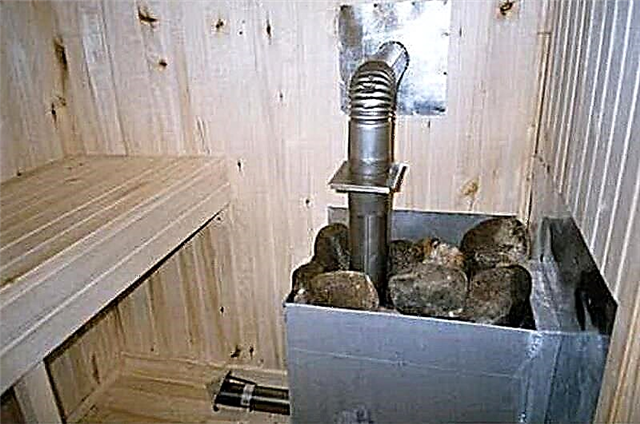
Fire from all edges heats the stove, and this significantly increases the efficiency of the furnace. The volume of the furnace is different, during its construction takes into account the parameters of the steam room and the number of people washing in it.

The size of the heating system depends on the strength of the heating system. The higher the ratio, the more fuel is burned. For ideal air heating, the parameters of the sauna stove must be as follows: the ratio of the furnace to the area of the heated room is 1:50 or 1:70, the depth of the furnace opening is 1: 2 or 2: 3, and the volume of the furnace to the chimney cross-section must be in the proportion 1: 10.

The heat exchanger for the bathhouse furnace is a technical unit that heats the incoming liquid with its subsequent transfer to the hinged tank.

What are metal bath stoves made of?
Iron stove for a bath - a classic version of continuous burning with water outline. The device consists of a metal clogged box equipped with a furnace door and an exhaust pipe.

For the production of metal stoves for a bath with your own hands, you will need raw materials and parts:
- a steel sheet having a thickness of about 8 millimeters,
- doors for the furnace, blower and heater,
- tap water,
- grate,
- chimney pipe.

Carrying out the equipment, it is necessary to use fat metal, so the device will mainly generate heat when heated.
Creating a tank for heating water
The most practical method of heating water in a bath is to use heat from the stove. There are several ways to install a tank for a sauna stove, the main thing is the location of the tank, it can be: internal, hinged and remote location.

To develop the tank, three versions of the material are used: cast iron, stainless steel tanks or stainless steel. To make an iron barrel, a number of steps must be taken.
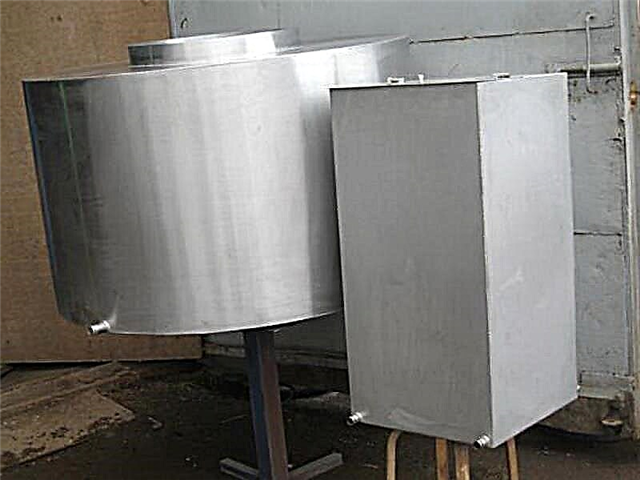
First you need to cut the desired piece of pipe. Cutting points must be carefully processed. Then you need to start installing the bottom and top cover of the tank. The next step is the soldering of all cut parts. After that, it is necessary to install a faucet and nozzles, as well as a heat exchanger for the sauna stove. Then the installation work of the module is performed.
We assemble a furnace for a bath with our own hands made of metal
The furnace supply for the bath is preferred to be built separately. This is due to the fact that it is permissible to make just the model of the furnace that you just wanted. Then, to make a metal bath stove with your own hands, you will need drawing reading skills, construction tools and materials. In the beginning it is necessary to draw up a project, and determine the dimensions of the device.

There are 2 constructive versions of homemade stoves, this is a horizontal and vertical version. To make a furnace you need:
- a rod with ten millimeters,
- 8 mm thick sheet steel
- iron pipe
- latches
- water tap
- two meters of pipe.
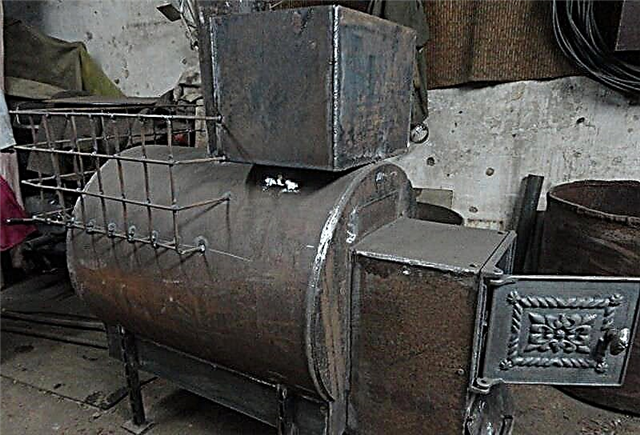
We take a large fragment of the pipe and cut out an opening for the blower in it. In the middle of the pipe from the side of the opening, weld fasteners for the grate. Then we equip the furnace, for this we weld the fasteners for the rods of the heater. On the back of the heater we cut a hole through it steam will be supplied. We fill with stones suitable for this type of unit.
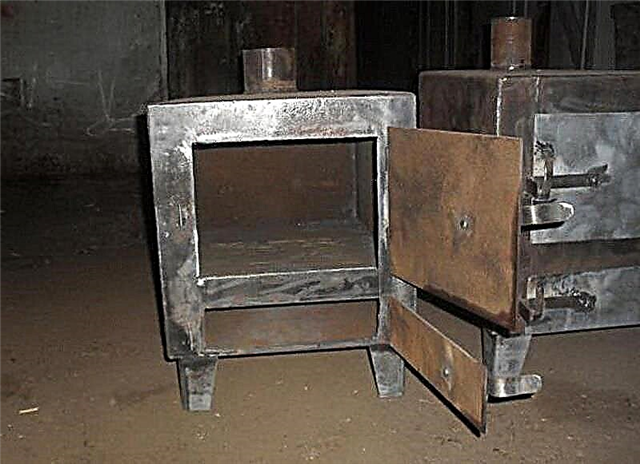
In the roof for the furnace, cut a hole under the chimney pipe and install it. And do not forget to cover the sauna stove with useful material to create a classic stove. It’s not difficult to build a device, the main thing is to follow the instructions.

Necessary equipment for work
The installation of a sauna furnace is an important matter, on the correct organization of which the normal operation of the installation depends. Initially, you should choose a place to place it. It is still necessary to adhere to fire safety rules.
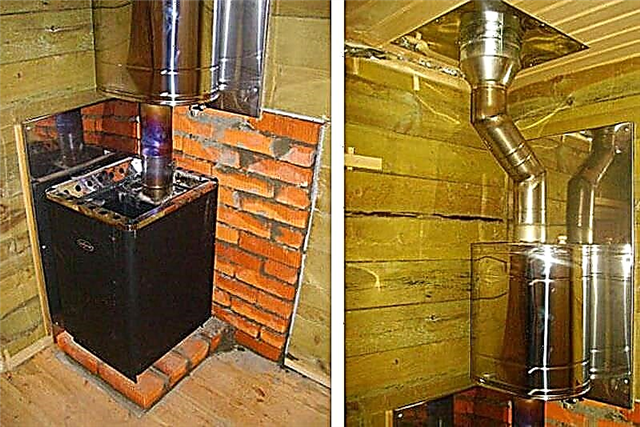
According to the standards, the distance between the furnace and the inflammable wall should be at least 25 centimeters. First you need to determine which furnace you decided to put. The next stage is the preparation of the plan, and the calculation of the necessary material.

To assemble a home-made furnace, you will need tools: a grinder, metal scissors, an apparatus for carrying out welding works, a variety of measuring and marking kits. You will also need material. A step-by-step manufacturing process can be seen on the video presented in this article.

Material for a metal furnace in a bath
Making stoves is an interesting and time-consuming procedure. There are many types of metal furnace models. The main task that stands before you is to create a sufficiently strong structure so that there are no deformations and high heat conductivity. For the manufacture of the mechanism using different materials, these are: cast iron, steel and heat-resistant steel. The most common manufactory is steel.

This matter tolerates temperatures up to 400 degrees. Obesity of steel starts from 4 millimeters, but the minus of the material is that it quickly burns out. The next material used is heat resistant steel.

The minimum thickness of the metal is 3 millimeters. The stoves are made of the safest material, productive and easy to install. Another material for forming metal stoves for a bath is cast iron. It is not inferior in strength to steel, but at the same time its heat capacity and fragility are comparable to ceramics.

Installation of the furnace in the bath
Precise installation of the stove in the bathhouse with your own hands is a responsible procedure, since the comfort and safety of its operation will depend on this.

In order to effectively warm up the steam room, you need to choose the location of the furnace structure. Observing all the rules and regulations on the placement of heating means, will allow for many years not to worry about remaking the bath device.

First of all, you need to calculate the dimensions of the device for the dimensions of a high-temperature room, because the roof and interior decoration can burn, smolder, or melt, so that this does not happen, you need to choose the correct placement of the stove. You should also take care of installing the hood for the sauna stove, and do it yourself. It should be placed 50 centimeters from the wooden floor.
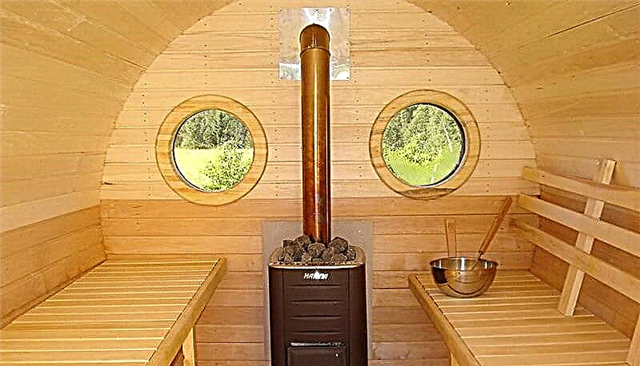
If it is protected by a metal screen, the distance can be reduced. The partitions opposite the firebox may not be insulated. The clearance from the ceiling to the top cover should be 1.5 meters.

The elements of the furnace structure should be unhindered access, in cases of accident. You also need to plan in detail the ventilation system in the steam room, and consider the output of the products of combustion. When installing a brick oven, you need to create a solid foundation, and light metal structures should be placed on non-combustible floor foundations.
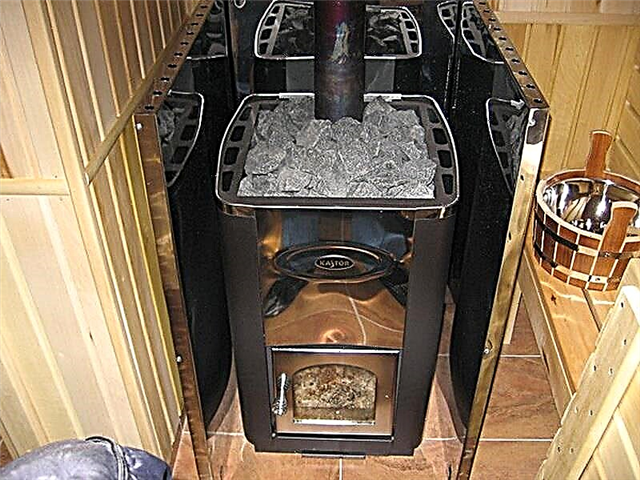
Prices for various types of stones for stoves
So, a do-it-yourself oven for a bathhouse is a completely feasible task, if all technological nuances are taken into account during manufacture, and when installed, comply with established safety requirements. But a self-made stove will not only help to save a considerable amount, but it will also become the pride of the owner when it will be possible to invite your friends to the bathhouse.
Do you like the article?
Save so as not to lose!

